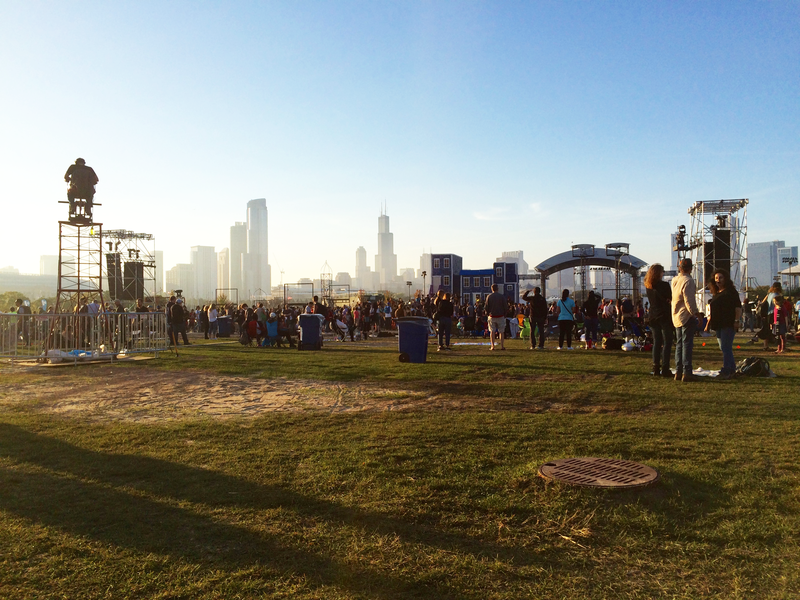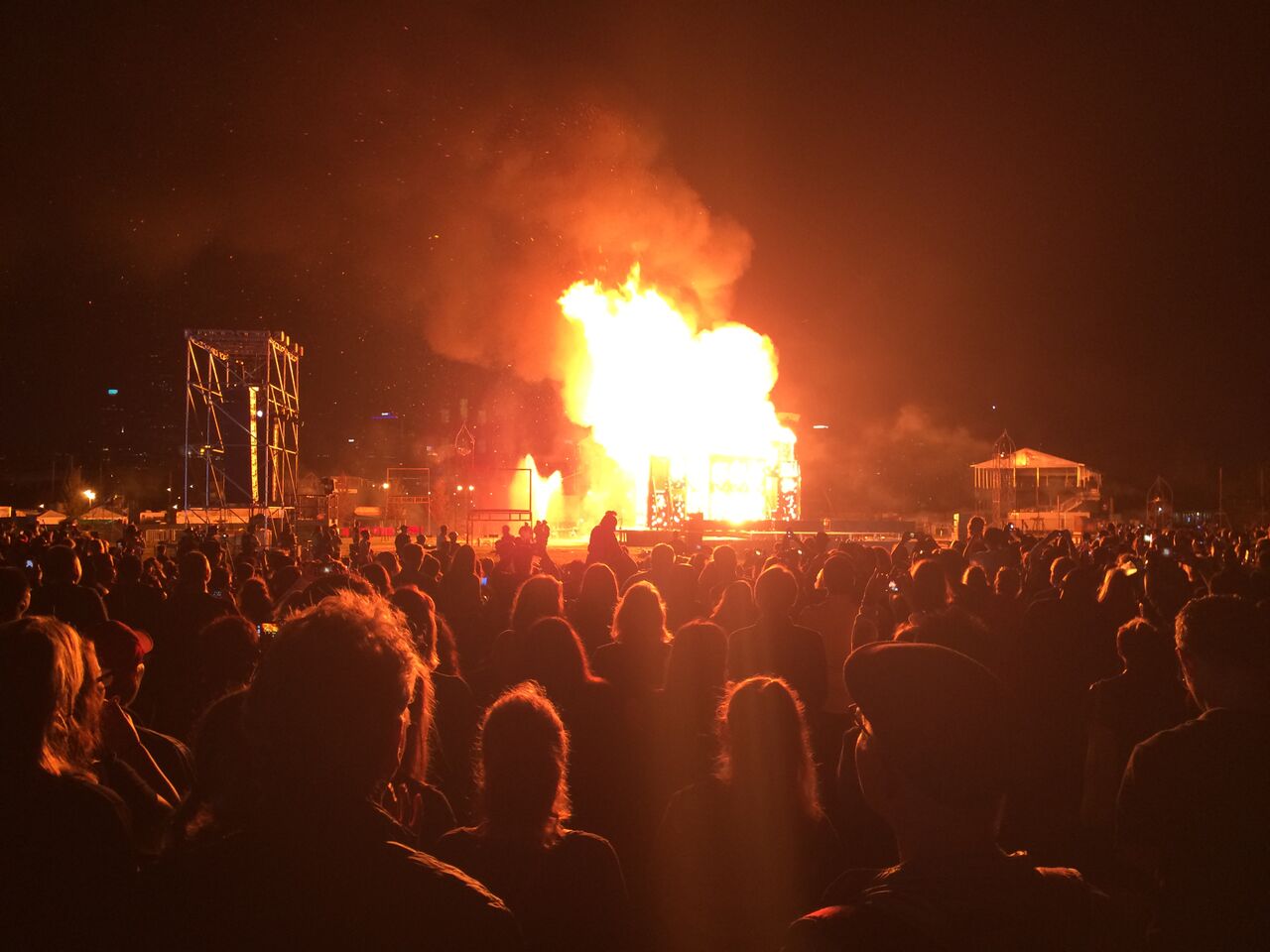It is not failure or the frequency of failure or even the scale of failure that is the deciding factor in the arch of a career or project, but the response to it.”
So wrote Jim Lasko, the performance artist and Executive Artistic Director of Pilsen’s innovative Redmoon theater company, in a Tribune op-ed this past January, four months after the largest public failure of his career.

The first iteration of the Great Chicago Fire Festival, Lasko’s brainchild, played out over the summer of last year. His organization, in a massive display of public outreach, brought performances, art, and workshops to the city’s South and West Sides.
But when it came to the festival’s climax, a controlled fire that would consume wood structures on a Chicago River barge, Redmoon’s pride turned to embarrassment. Days of rain had soaked the wood, and the fire failed to spread.
The audience was visibly stunned. The Weekly’s Stephen Urchick called it “a spectacularly slow burn.”
So when Redmoon announced that it would try again, many were surprised.
But this year’s festival would be different. Redmoon had less money to work with; Lasko told the Tribune in September that this year’s budget was around $900,000, about $1.5 million less than in 2014.
The festival’s closing ceremony was relocated from the uncertain waters of the river to the solid ground of Northerly Island, perhaps to make certain that not even a light mist would dampen Redmoon’s ambitions this time around.
For this year’s festival, Lasko’s company ventured out into the city once again, presenting performances and working with adults and children alike to build “community portraits” of eight neighborhoods, including Calumet Park, Little Village and Lawndale. Videos about each greeted the more than five thousand people who showed up to the closing ceremony on September 26.
The scene was striking enough for one to wonder why Northerly Island isn’t the venue for every large-scale outdoor event in the Chicago area. Looking toward the food trucks lined along the back of the meadow, one could see the South Side. The glass panels of Soldier Field stood to the west, looming over local artists’ pop-up shops. And at the center of the meadow, amidst the stages and DJ booths, stood the main attraction—the house.
Nicknamed G.R.I.T. (for Group Ritual Imagining Tool, naturally), the all-wood structure stood two stories tall. Crescent-moons were carved into its walls, to be revealed once the façade of the building started burning away. Special effects technicians had been working for three weeks to ensure it would burn cleanly and wholly to the ground.
Seated in a corner of the cramped space, a cellist played, maneuvering his bow around the people brushing up against him. Attendants stationed outside the house strongly encouraged festivalgoers to write their afflictions on small pieces of wood and place them inside the house to be burned. Draped in a purple shawl and seated at a small desk, Gloria Needlman of Hyde Park offered markers with which to do so.
It was the “ ‘Great Chicago Fire’ Festival” in name only. The fire itself, an event in the city’s collective memory important enough to warrant its own six-pointed star on Chicago’s flag, served mostly to unite what was otherwise a scattered set of performances, speeches and, of course, conflagrations. The spectacle had little time for history.
Instead, Redmoon rolled out an almost entirely incomprehensible hour of faux rituals and poorly choreographed ceremony. After a group representing Chicago’s original First Nations inhabitants “blessed” the festival, hundreds of children took the stage alongside the drumline ensemble of the Chicago Bulls. Flaming cauldrons atop tall, crane-like structures crowded the air with smoke.

But none of it mattered all that much. The audience, after all, had come for the fire.
Bruce Strong, a veteran special effects crewman for NBC’s Chicago Fire and one of the men responsible for the impending blaze, bet his colleagues that the house would go in thirty minutes. They replied with variations on that number.
The task of ignition fell, fittingly, to Lasko. Climbing a small set of stairs to the front door, he hurled a pair of burning sticks over and into the roofless house. Triumphant, he lifted his hands and backed away. The music stopped, letting five thousand people watch uninterrupted as the fire glowed through the façade’s moon-shaped cutouts.
Framing a concert-style atmosphere around a historical event that killed hundreds and displaced tens of thousands may seem crude. But it was the city’s eventual rebirth, not the fire itself, which fueled the celebration.
“I think the biggest thing about the fire is that after it happened, it was so much about looking to the future and rebuilding,” says Ani Schmidt, an education specialist at the Chicago History Museum. “That’s such a big part of what our city has become, because of the efforts and strength that came out of the fire.”
Even more than unity, what emerged during the festival was the small-town persona that hides behind Chicago’s big-city sheen. To see thousands of people invested in a ritual intimately tied to the history of their hometown made Northerly Island feel more like a village green in colonial New England than anyplace else.
As soon as the fire died, and as suddenly as the music had stopped, fireworks exploded from behind the stage. The electronic dance music of Justin Bieber and Rihanna blared through the speakers.
Whether the sense of shared experience with which attendees left the festival would last for more than twenty-four hours was hard to tell. Also uncertain is whether this is the closing chapter in Redmoon’s redemption; city funding for the festival has run dry, and the company has not announced whether it will return next year. But this time, at least, Redmoon took its unique brand of pop mysticism and grafted it onto the landscape of an entire island, creating a blaze that was nothing if not memorable.

